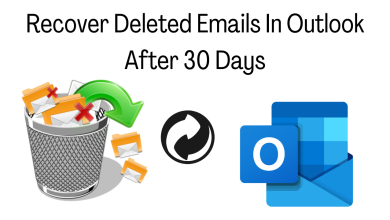Monitor Your Competitors Using Python Web Scraping

According to the Small Business Administration, the startup failure rate stood at around 90% in 2019 – with more than 20% of startups failing in the first year of business. These alarming numbers bring the growing competition in the market to survive into the limelight.
For this reason, it is you must sleep with one eye open. With the number of innovative marketing strategies and online marketing that new startups and major businesses have started to adopt, you’d lose your place in the market if you don’t keep an eye on your competitors.
How Can You Counter This Situation?
It’s not uncommon to suddenly see a lull in sales and a significant drop in your keyword rankings. This is because all businesses are constantly upgrading their marketing tactics, trying to rank high on the search engine.
But, waiting for your ranking to fall before you try to rectify the situation might endanger your hold on the market and customers. For this reason, it is crucial to stay one step ahead and do a competition SEO analysis to figure out why your competition ranks more than you. Once you have that particular knowledge, you’ll be able to identify the keywords your competitors rank in, the areas they’re missing out on and modify your content accordingly.
Python, SEO Analysing, Web Scraping – A Detailed Guide
All SEO professionals understand the versatility of the Python syntax and its role in analysing SEO data through web scraping. Now, if you are unfamiliar with these terms, let’s dive into a basic introductory course on what these terms mean:
-
Python
It is an object-oriented high-level programming language that emphasises code readability. Python is user-friendly and versatile and helps automate your everyday monotonous tasks. For example, if you were to gather data on your competition from a website manually, it would take up most of your time. Fortunately, Python can automate the entire process and compile the data in an easy-to-use format.
-
Competitive SEO Analysing
Competitive SEO analysis creates a roadmap to determine what you need to do to improve your search rankings online. This vital step helps you stay on top of your competitor’s moves and enhance the user experience for your customers.
-
Web Scraping
Web scraping, also popularly known as web harvesting and web data extraction, is the process of extracting large amounts of data from websites for lead generation, price monitoring, market research, and competition monitoring. Usually, businesses resort to web scraping to make the most use of the publicly available data to make informed decisions.
Why Should You Use Python For Web Scraping?
Scraping data from the internet is essential in this age of cutthroat market competition. While there are many programming languages that you can use to accomplish this task, Python is the unanimous favourite due to the following reasons:
- Easy to use – When using Python, you can avoid semi-colons and curly braces, making it easier to use.
- Dynamically typed – Python allows you to use variables wherever you want without defining databases.
- Large library collections – You can access vast libraries like Matlplotlib, Numpy, Pandas, etc., that provides methods and services of all kinds. For this reason, it is easier to use Python for web scraping and manipulation of extracted data.
- Small codes – In Python, you can write small codes that perform large tasks. This saves time and makes Python the preferred programming language for web scraping.
Monitoring Market Competition With Python Web Scraping
Coding with Python from scratch can be a cumbersome process, especially if you are a small e-commerce business. However, with the evolutions of modern-day technology, you don’t have to worry too much.
In the 21st century, any student and search for JAVA assignment help and plagiarism checker tool online, and they’ll find a hundred options to choose from. Similarly, you can avoid the entire process of Python coding and download Scrapy.
Scrapy is an easy-to-use, free, open-source application framework that a novice can use to create a web spider that crawls on your competitor’s website and collects data. All you need is fundamental knowledge of reading HTML and CSS, and you’re good to go!
While there are many other options like Price Trakker and Upstream Commerce that allow you to track your competitors and develop dynamic pricing strategies, these alternatives are much more expensive than developing your monitoring bot.
Step-by-step Guidance on How To Download Scrappy With Python
Before you can begin the process of building a web crawler bot with Python, you should check whether you have downloaded all the necessary programs, services, packages and frameworks. To work with Scrappy, you need to download:
- A minimum of Python 2.7
- The pip package manager
- Python setup tools
- The Python libraries OpenSSL and lxml
If you’re running this application on MAC, you should already have Python installed. So, all you need are the additional requirements.
Step 1: Open your Mac terminal, navigate to the directory where you downloaded the get-pip.py file and run the command:
sudo python get-pip.py
Step 2: Enter the password that you use to log in to your Mac and download the pip package manager and Python setup tools
Step 3: Run the command –
sudo pip install –upgrade six
This updates a package called six and helps avoid any issues between six and Scrapy
Step 4: Install Scrapy using the command –
sudo pip install Scrapy
If you’re downloading Scrapy on Windows, you’ll have to follow a few additional guidelines highlighted in the installation guide.
Once you have installed Scrapy, all you have to do is:
- Target your start URL
- Parse the product category page
- Parse the product detail page
- Start monitoring prices
You can successfully gather enough data on your competitors to improve your business strategies by following these simple steps. Then, armed with a strong SEO strategy based on your collected information, it becomes easier to achieve success and stay ahead of your competitors.
Summing it up,
Python is the go-to programming language for companies whenever they require data on their competitors. With the help of Scrapy, it is easier to create web spiders that crawl on your competitor’s websites and gather valuable data automatically. In addition, thanks to the flexibility of Scrapy and Python, it is easier for beginners to use these to isolate and extract all sorts of data.




